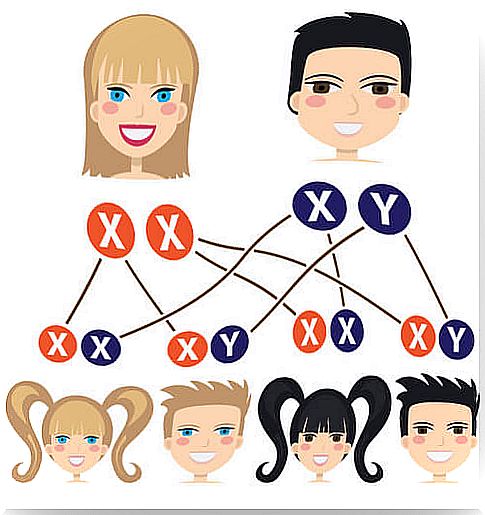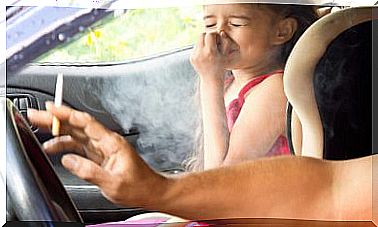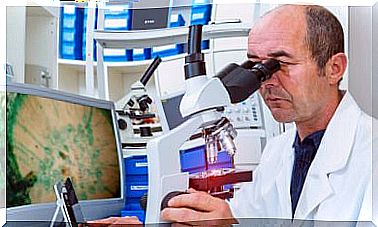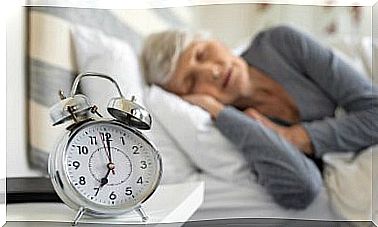Aarskog-Scott Syndrome Or Faciogenital Dysplasia
Aarskog-Scott syndrome or simply Aarskog syndrome is a rare genetic disease, linked to the X chromosome and mainly affects people of the male sex.
Fewer than 100 cases have been identified in the world since its discovery in 1970. It is a genetic disorder.
Inheritance
Aarskog-Scott syndrome is related to the FGD1 gene (faciogenital dysplasia gene 1). As we mentioned earlier, it is an X-linked autosomal recessive disease. Autosomal recessive implies that the individual with this disease has two recessive alleles for the gene involved.
But the FGD1 gene is on the X chromosome and males only have one X chromosome (they are XY). Therefore, they only require a mutated FGD1 allele to present the disease.

Also, it is extremely difficult for a woman to have this disease. This is explained because the mutation is very rare, and they would need the mutated genes on both chromosomes. For this reason, women are usually only carriers, because the healthy chromosome compensates for the sick one.
However, they can manifest the syndrome mildly, especially on the face and hands. A female carrier has a 50% chance of transmitting the mutation to her sons and daughters. Therefore, the children would present the disease with greater probability.
Symptoms
As in any disease, there are interindividual variations in the symptoms that occur. However, the most general and characteristic are:
- Short stature
- Ocular hypertelorism
- Shawl-shaped scrotum
Symptoms generally appear within three years. The initial physical appearance changes with growth, especially after puberty.
General features
Puberty in children with Aarskog-Scott syndrome appears delayed. On the other hand, the stature is short. There is also a delay in the appearance of the typical lugs. In adulthood, the average height is between 1.60 and 1.70 m.
Factions
The face is rounded, and facial edema (“swelling”) appears in children under 4 years of age. The so-called “widow’s beak” appears, which corresponds to a V-shaped hairline. In addition, the ears have a fold at the top.
On the other hand, maxillary hypoplasia appears, which is a pathologically small jaw. The teeth come out in a delayed manner, and a slight crease appears under the lower lip.
Eyes
As already explained, ocular hypertelorism is especially characteristic. This means that the eyes are further apart than normal. In the average adult, the distance between pupils is between 5 and 7 cm.

However, in this syndrome, the eyes are unusually open and blepharoptosis (droopy eyelids) appears. On the other hand, the palpebral fissures (the space between the eyelids) draw a descending line.
Nose
The nose is usually small or wide. In addition, there is an anatomical uniqueness regarding the nostrils (the nostrils). When viewed from below, instead of being A-shaped, they are V-shaped. This is called inverted nostrils.
Extremities
The joints are hypermobile, that is, they deform beyond normal. Appears, on the hands, apelike fold (a single horizontal fold on the palm). They develop brachydactyly, that is, short fingers. In addition, the pinkies deviate inward and the thumbs on the hands and feet are wide. Finally, a subtle membrane appears between the fingers.
Neck
Patients with Aarskog-Scott syndrome have a short neck. In addition, they present in this location the so-called cervical pterygium. This corresponds to a conjunctive fold emerging from the side of the neck.
Chest and abdomen
The so-called pectus excavatum appears, which corresponds to a sunken sternum. They also sometimes have a prominent navel. Inguinal hernia may also appear.
Genitals
Another very characteristic aspect of Aarskog-Scott syndrome is the “shawl” shaped scrotum. The scrotal bag appears in the shape of an arch. In addition, they usually present cryptorchidism, which corresponds to undescended testicles (still in the abdomen).
Mental characteristics
Patients with Aarskog-Scott syndrome have a normal IQ in most cases. However, they occasionally have mild or moderate intellectual deficiency. On the other hand, it is true that these patients usually present with attention deficit hyperactivity disorder (ADHD).
Do you have treatment?
Yes, Aarskog-Scott syndrome is treatable and generally consists of corrective surgeries that seek to improve the patient’s quality of life. It also includes orthodontics.
On the other hand, treatment usually includes support for the social integration and learning part.









